Databases
In ZennoDroid, you can work with different types of databases, such as Microsoft SQL, MySQL, PostgreSQL, SQLite, and others. You can connect to them either from your local computer or a remote server, and then upload the necessary data.
How do you add it to your project?
Right-click context menu: Add Action → Data → Directories.
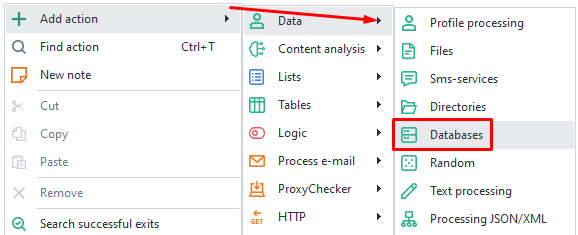
What the action looks like
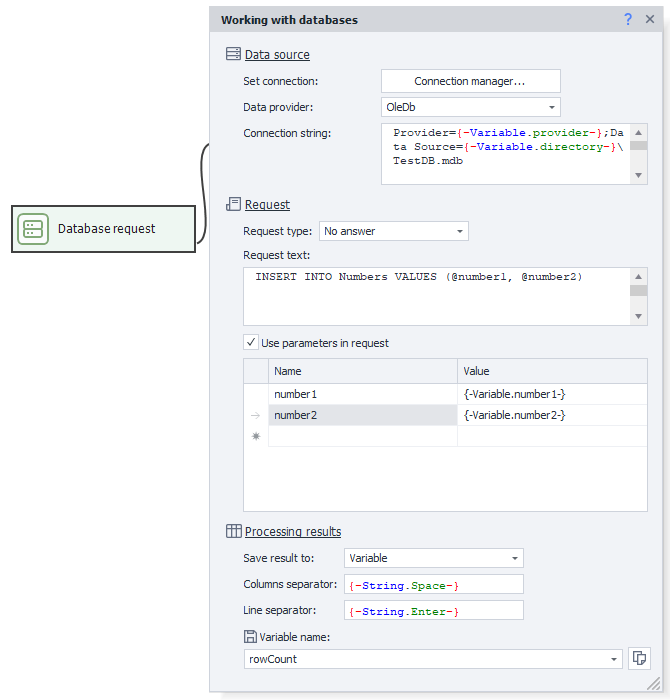
Data source
To make sure you work with a database properly, you need to set up the connection correctly. The required parameters will depend on the specific DBMS (Database Management System).
Connection Manager

It's designed to make creating a Connection String easier. Once you fill in the main details, the string will be generated for you. First, you need to specify the data source, and then select the database file.
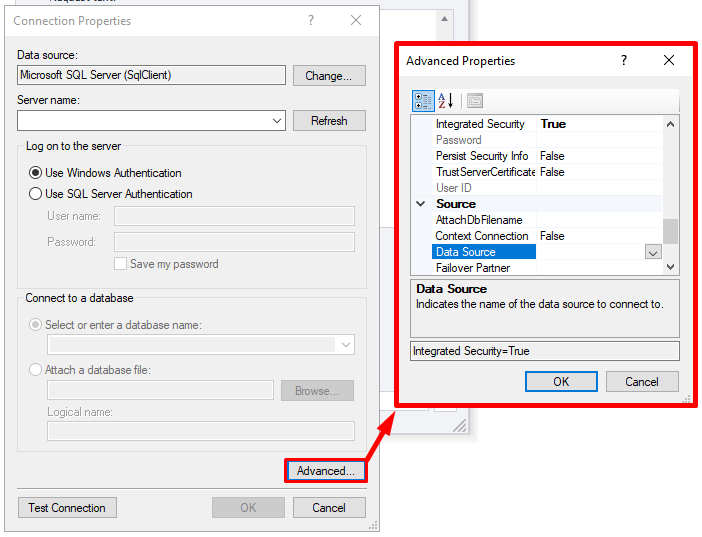 |
|---|
| Advanced settings are also available |
Data Providers
Several data providers are available:
- SqlClient
Provider for native connections to Microsoft SQL Server; - MySqlClient
Provider for native connections to MySQL by Oracle; - OleDb (Object Linking and Embedding Database)
This technology lets you access different data sources through a single interface (including SQL Server); - Odbc (Open Database Connectivity)
A single interface for running SQL queries, regardless of the DBMS you're using;
Connection String
Here you enter various login parameters (like username and password). Instead of building the string manually, you can use the Connection Builder described above.
Examples of connection strings for different DBMSs.
Request
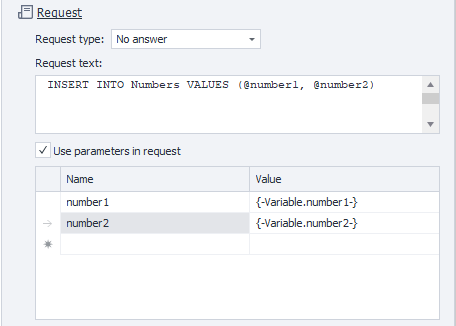
Request type
No answer
Used for operations that don't return data from the DB (for example, INSERT or DELETE). As a response, these operations return the number of rows affected.
Scalar
Lets you get a single value. For example, to use an aggregate function: select sum(price) from fruit.
Normal
Returns a table with data.
Request text
The field where you enter your SQL query.
Use parameters in request
Parameters make it easier to write queries because they can be inserted into places in the text you specify.
There are named and unnamed parameters. For named ones, their names matter; for unnamed ones, their order matters. Which type you use depends on the specific DBMS.
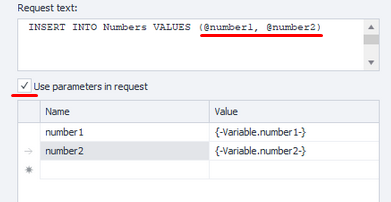 | 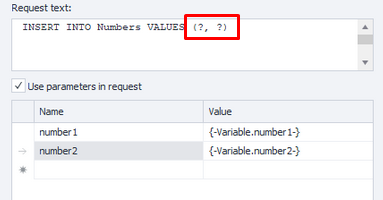 |
|---|---|
| Named parameters | Unnamed parameters |
Results processing
Here you choose where to save the query results.

Save result to:
Variable
All the rows and columns from the query will be saved into a single variable.
You also need to pick separators for splitting up rows and columns.
List
Saves the query results into a list. It's important to specify a separator for the columns. In the end, each database row will become a new item in the list, with the chosen separator between columns.
Table
When saving data to a table, the cells get filled in according to your query.
Variables
This option lets you save the results in several variables at once.

Line number. Your query could return several rows, so you need to specify which row you want to use (numbering starts at zero).
In the table below, you select the cell number in the row and which variable it should go into (also numbered from zero!).